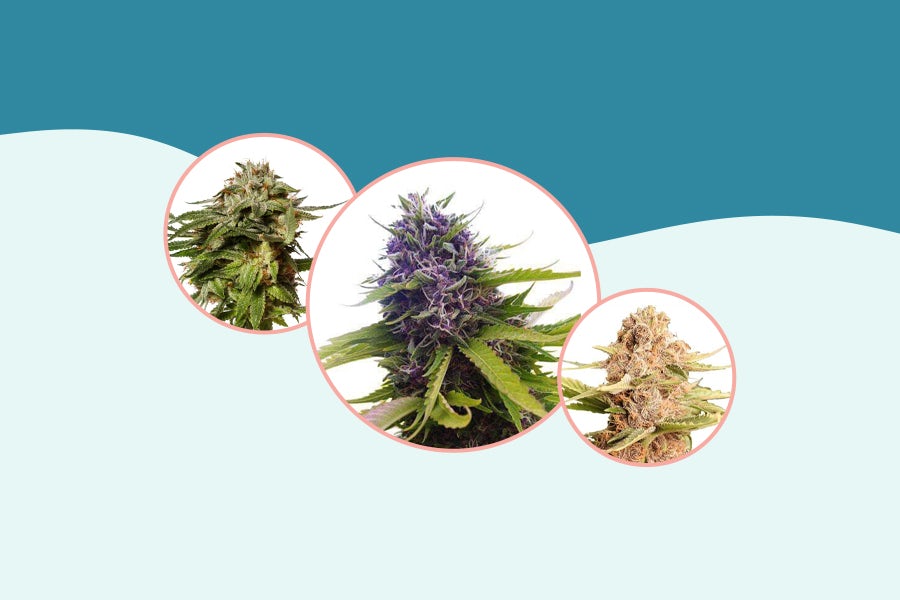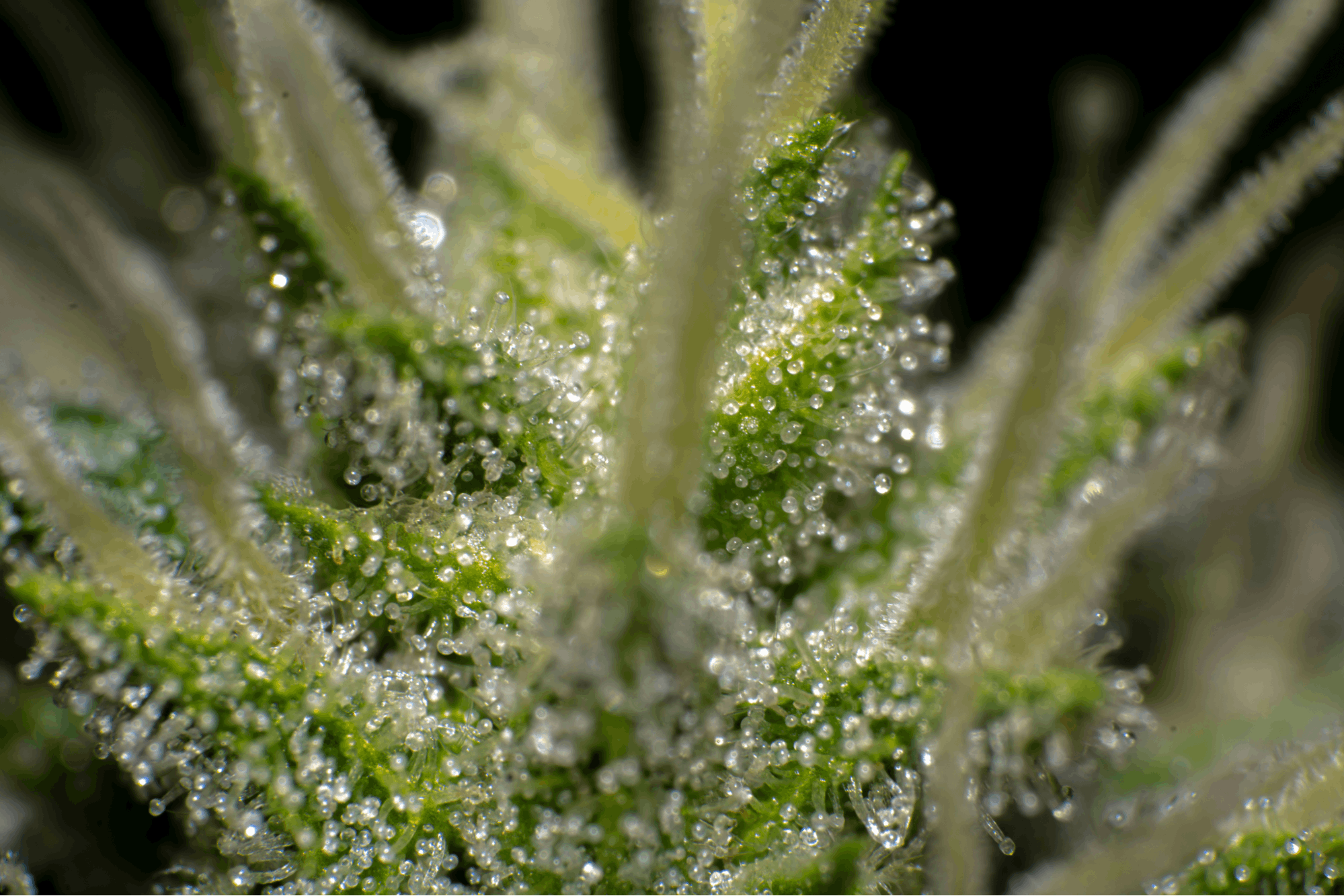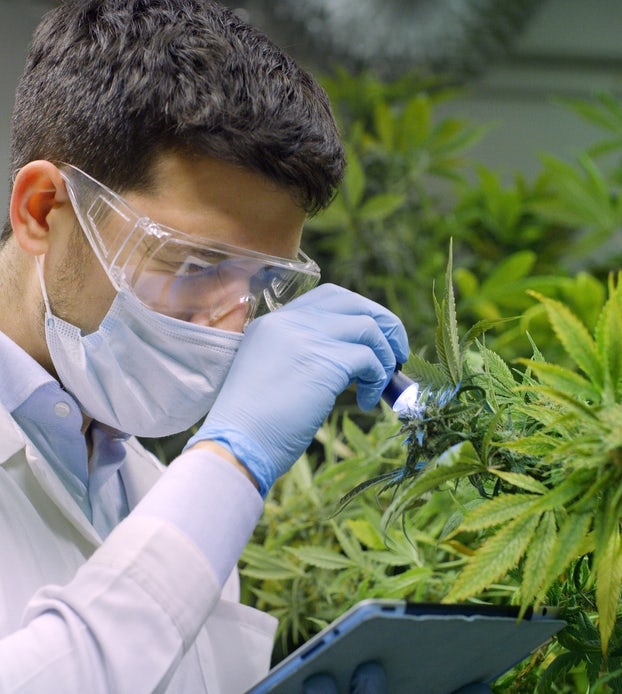Humidity may not be the central aspect of cannabis cultivation, but it plays a vital role in the plant’s development. If you’re interested in growing your own cannabis but don’t take note of humidity levels you could easily slow down your plant’s growth.
Why is humidity so crucial for cannabis?
Cannabis plants naturally flourish in a range of temperate and subtropical climates, but the amount of moisture in the air needs to be regulated to ensure their optimal growth. Air moisture affects the microclimate surrounding each plant leaf that is known as the “boundary layer.” High humidity causes the boundary layer to become thick which in turn reduces uptake of CO2, water and nutrients thus resulting in poor plant growth. On the plus side, a thick boundary layer also reduces water loss, which is why a high humidity environment is desirable for the healthy propagation of fresh cuttings that are unable to absorb water due to their lack of roots. 1
However, you should gradually wean your plant off of these elevated cannabis seedling humidity levels.
Monitoring your humidity levels is also important for controlling plant pests and diseases. If you don’t continue decreasing the relative humidity through vegetation and flowering, you increase the odds of nasty conditions like gray mold (also known as bud rot or Botrytis) and mildew. Unfortunately, these issues could spoil your entire cannabis crop.
What happens if my cannabis humidity levels are off?
Improper humidity could stunt your cannabis plant’s growth in the seedling phase. Without enough moisture in the air, there’s no way your young plants can take in water while they develop their root structures. Too little humidity in the propagation stage of growth will cause your clones to wilt and become more susceptible to disease.
Conversely, too much humidity in late vegetation and flowering will reduce the plants ability to photosynthesise and take up valuable nutrients from the soil. This can reduce plant size and flower development, and also decrease cannabinoid production. 2
As an additional burden, mold and mildew thrive in damp and stagnant conditions, so they have an easy time maturing in colas if cannabis humidity is too high. 3
It’s also worth mentioning relative humidity could influence your grow tent’s average temperature. Generally, the higher the humidity, the hotter it will feel—and vice versa. 4
While the optimum temperature for cannabis can be as high as 35℃ depending on geographic origin, maintaining an average temperature of 25℃ is suitable for most varieties for intensive indoor cultivation. 5
Many companies manufacture thermometers with hygrometers, which are used to measure humidity, so you can keep track of the best temperature and humidity for your cannabis.
The best humidity levels for cannabis growth stages
The ideal humidity for growing weed isn’t a static percentage. No matter what strain you’re growing, you have to adjust your cannabis humidity from high to low as the plant matures. Here are a few humidity and temperature ranges to aim for while during the different cannabis cultivation stages.
Clones and seedlings
- 70% relative humidity (plus humidity dome for clones)
- 75° – 80° F
Vegetation
- 60% relative humidity
- 68° – 78° F
Early flowering
- 50% relative humidity
- 65° – 75° F
Late flowering
- 40 – 45% relative humidity
- 65° – 75° F
How do you increase or decrease a grow tent’s humidity?
The simplest way to increase and decrease relative humidity in a grow box is to invest in a humidifier and a dehumidifier. These devices allow you to effortlessly adjust your room’s average humidity at the flick of a switch.
However, if you don’t have the funds to buy either of these units, there are other ways to adjust humidity levels manually.
- For instance, many cannabis growers put a bucket of clean water in their grow tent for evaporation. You could also mist the inside of your grow tent to increase humidity.
- As for decreasing humidity, most cultivators strongly recommend double-checking your exhaust vents and introducing more oscillating fans. Moving wind through your plants helps disrupt the leaf boundary layer and improves photosynthesis and the movement of nutrients and water resulting in higher bud yields.
You should also be careful of overwatering your plants. New cultivators have a habit of overwatering their weed, which can contribute to excessive humidity if the soil is not well drained.
Do you need to use a humidifier?
You don’t need a humidifier or dehumidifier to control cannabis humidity. However, both of these units make life as an indoor grower extra convenient.
If you can’t afford these units, you will have to rely on less precise methods like spraying your grow tent’s sides, adjusting your exhaust fans, or re-thinking your watering schedule.
While using these techniques could help, they won’t give growers the best control over their grow space. Ultimately, the more controlled your environment is, the more uniform your plants and their cannabinoid content will be. 6
What’s the best humidity for cannabis outdoors?
Cultivators who enjoy growing cannabis outdoors must provide their plants with the same humidity levels listed above. Ideally, you should be in a subtropical or temperate climate with reliable weather patterns.
If your temperature zone doesn’t get excessively humid early on, you could grow your clones and seedlings in humidity domes before planting them outside. Just be sure the relative humidity is around 60 percent during vegetation for the best success.
Alternatively, cultivators could stick with strains that aren’t as dependent on hot & tropical temps. Remembering that cannabis grows wild from the mountains of Asia to the midwest of the United States, it’s easy to imagine that there are varieties that don’t mind dryer or cooler temps.
Outdoor cultivators could also consider autoflowering strains if they live in an environment that’s inhospitable to growing weed. With a shorter life cycle and often smaller, less dense buds, autoflowers can offer more flexibility in tough environments.
Cannabis humidity 101: start high and gradually dehumidify
The best temperature and humidity for cannabis will always depend on the type you’re growing. If you’re new to cultivation, make sure to double-check your chosen cultivar’s average growth habits to have the best chance of setting up an optimal environment.
However, no matter what seeds or clones you end up planting, it’s always best to start with high humidity and gradually wean your weed off of air moisture. This tried-and-true strategy should help your cannabis plants quickly develop roots and avoid mildew.
Sources
- Taiz L, Zeiger E, Møller IM, Murphy AS (2015) Plant physiology and development, Ed Six.. Sunderland, Massachusetts U.S.A. : Sinauer Associates, Inc
- Clarke RC (1981) Marijuana Botany An Advanced Study: The Propagation and Breeding of Distinctive Cannabis.
- McPartland JM, Clarke RC, Watson DP (2000) Hemp Diseases and Pests: Management and Biological Control : an Advanced Treatise. 284
- Meiling He, Nianping Li, Yingdong He, De He, Kuan Wang, Influences of Temperature and Humidity on Perceived Air Quality with Radiant Panel Workstation, Procedia Engineering, Volume 205, 2017, Pages 765-772, ISSN 1877-7058, https://doi.org/10.1016/j.proeng.2017.10.008.
- Chandra S, Lata H, Khan IA, Elsohly MA (2008) Photosynthetic response of Cannabis sativa Photosynthetic response of Cannabis sativa L. to variations in photosynthetic photon flux densities, temperature and CO 2 conditions. In Physiol. Mol. Biol. Plants, Vol 14, pp 299-306
- Chandra S, Lata H, ElSohly MA, Walker LA, Potter D (2017) Cannabis cultivation: Methodological issues for obtaining medical-grade product. In Epilepsy and Behavior, Vol 70. Academic Press, pp 302-312
Sign up for bi-weekly updates, packed full of cannabis education, recipes, and tips. Your inbox will love it.

 Shop
Shop Support
Support


















